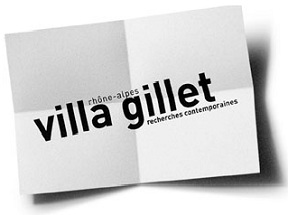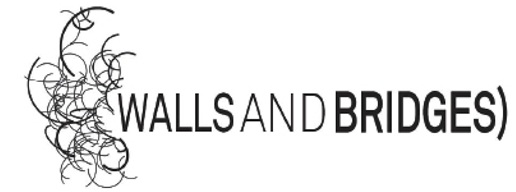The Neurosciences & Literature: an “exquisite corpse” or a “meeting of the minds”?
Lionel Naccache a été reçu en 1988 au concours de l'Ecole Normale Supérieure (Ulm). Il obtient une maitrise en biochimie et un diplôme d'études approfondies en neurobiologie. En 2002, il soutient une thèse de doctorat en neurosciences à l'Université de Paris VI sur « La perception subliminale des nombres : propriétés psychologiques et imagerie cérébrale fonctionnelle de processus cognitifs inconscients » dirigée par le Pr. Stanislas Dehaene. Il est actuellement praticien hospitalier dans le Pôle des Maladies du système nerveux à l'Hôpital de la Pitié - Salpêtrière de Paris. Maitre de Conférences des Universités et enseignant chercheur à l'Université de Paris VI et à l'Inserm, Lionel Naccache consacre son activité médicale et scientifique à l'exploration des bases cérébrales de la conscience.
In the context of the Walls and Bridges project in New York, a meeting has been organized for October between an American novelist - Siri Hustvedt - and a French neuroscientist on the topic of "fiction," both mental and literary.
This will obviously be the time to ask ourselves: can we imagine a promising future for meetings between the neurosciences of cognition and the world of literary creation? Is this merely the random juxtaposition of two terms to which we are attached, or the genuine dialectical culmination of self-consciousness? An amusing, trendy quid pro quo, or a key moment in our knowledge of ourselves as tale tellers ((Huston, N., The Tale-Tellers: A Short Study of Humankind. 2008, Toronto: McArthur & Co Pub Ltd.))?
The answer is not self-evident. In this time of transdisciplinarity's unabashed hegemony, it seems wise to keep one's head rather than to jump in eyes closed, an idiotic smile on one's lips, in euphoric celebration of one of contemporary science's new portmanteau words: "neuro-literature," after ethno-psychiatry; neuro-philosophy; neuro-psychoanalysis; psycho-sociology; socio-history; geo-sociology, etc. Shame on those who remain single!
And yet, I am inclined to favor the hypothesis of a meeting of the minds. Our mind/brain continues to actively produce meaningful interpretations of the world that, as soon as they are formulated, become the basis for our subjective beliefs: in fact, at this very moment you think and believe an entire set of things, beginning with your simple presence in the world. You believe you are the person you represent yourself to be, and in a certain way, this belief is not baseless, because this is how you seem in your own eyes, whoever you might be elsewhere, in the mind of another or in no other mind. To believe what we think is not trivial. If an object set before you suddenly disappeared, you would no doubt qualify this occurrence as incredible: "that's incredible"! This means that in the preceding instant, when you perceived the object in front of you, you didn't limit yourself to representing it to yourself, but associated this representation with a strong belief. We believe what we see. Such is the peculiar substance, which I call "fictions interpretations beliefs" ((Naccache, L., Le Nouvel Inconscient. Freud, Christophe Colomb des neurosciences. 2006, Paris: Odile Jacob.)), that makes up our conscious thoughts - those we are able to report to ourselves or others, in particular through acts involving language.
The cognitive neurosciences, and more specifically neuropsychology (the study of cognitive disturbances observed in a reproducible manner in patients with neurological or psychiatric illnesses), have provided us in a few decades with formidable demonstrations of the existence of such "fictions interpretations beliefs" (FICs). These fictions are in fact easier to detect when they are entirely erroneous, when they cross the boundaries of reality: a man persuaded that his wife, who is sitting opposite him, is a double; an amnesic who firmly believes in memories that are entirely made up; a left hemisphere disconnected from the right that tries to imagine - and immediately believe in - wild, completely false interpretations of behavior that is in fact driven by the right hemisphere with which it can no longer communicate; etc. Once discovered by neuropsychology, they are easier to reveal in a healthy person, when they make themselves more discreet, and when they follow the outlines of reality. We are irrepressibly narrative: as we become aware of information, we immediately attribute a meaning to it and match that with a measure of subjective belief. I do not qualify these representations as fictional because they are systematically untrue: our fictions may be perfectly well within the limits of reality, but they are nonetheless fictional in that they are the product of interpretation and an object of belief. We are reality's interpreters, not its spokespersons. Today, the first pages of the cerebral physiology of this conscious narrativity are beginning to be written: conscious access to a piece of information is associated with a brain-scale coherent conversation. This conversation produces successively revised versions of the manuscript of our conscious mental contents. The same information delivered unconsciously to a subject, for example in the form of a subliminal image, can be subjected to rich mental processes and even certain interpretations, but these unconscious representations are generally evanescent - they disappear in a few tenths of a second though they are able to leave traces - and remain confined within limited areas of the brain without setting off the cerebral ignition with seems to be the hallmark of conscious access ((Dehaene, S. and L. Naccache, Towards a cognitive neuroscience of consciousness: basic evidence and a workspace framework. Cognition, 2001. 79(1-2): p. 1-37.)).
Echoing this sketch of a cerebral science of narrativity, this daily and irrepressible human activity is expressed in a thousand phenomena, including the creation of tales and stories that will be explicitly represented as fictions: fictions offered to the self and to the reader who discovers them. The mise en abyme of the mind's narrativity: telling ourselves stories we know are stories, while acting "as if," as if we enjoyed taking this story for more true than it is, while knowing this is a game. A conscious game that, precisely, gives free play to our imagination, to this narrative faculty that enables us to extricate ourselves from immediate contingencies and think of the future - of the thousand futures open to us in the most complete uncertainty - while knowing we are playing a game: Napoleon lost the battle of Waterloo! The lucid nature of the game we play with our interpretative mechanism is, I believe, extremely precious. When awareness of such invention slips through our fingers, the illusion of precisely identifying reality takes over and violence and conspiracy theories are not far off. Paradoxically, such conscious fabrication seems to me to be capable of founding an ethic of responsibility, and an answer to post-modern relativism, but this is another story. Let me just note that these thoughts are not very far from those taking shape in the minds of numerous historians today ((Collectif, Sur les traces de Carlo Ginzburg. Revue Critique. 2011, Paris: Les éditions de Minuit.)) ((Collectif, L'histoire saisie par la fiction. Le Débat. Vol. 165. 2011, Paris: Gallimard.)). Art of the novel can thus be conceived as the most advanced form of the mise en abyme of this narrativity game. A conception just a bit (too?) Hegelian: the realization of the mind in the "History" of thought and culture. This conscious game enables us to throw light on certain blind spots, to raise the curtain on the systematic fictionalization we engage in, even despite ourselves, when we think and live our lives. Literature is seen as lighting up the blind spots of our modus operandi, a deliberate affirmation of our awareness of the human condition: we are authentic beings of fiction ((Naccache, L., Perdons-nous connaissance? De la Mythologie à la Neurologie. 2010, Paris: Odile Jacob.)).
It's time, then, for Siri Hustvedt and I to make the connections between conscious and unconscious narrativity ((Hustvedt, S., La femme qui tremble: Une histoire de mes nerfs. 2010, Arles: Actes Sud.)), to construct the mental and cerebral dynamic of the consummate art of fiction that defines us, to discuss the conceptions of the "Viennese quack" who so annoyed Nabokov - in terms more appreciative than his but critical nonetheless - and to each go off in search of the meaning of her or his story, or rather, to build it as we go along while pretending to discover it at the end of the road!
Notes
Cette ressource a été publiée dans le cadre de la troisième saison du festival "Walls and Bridges" qui s'est déroulée du 19 au 28 octobre 2011 à New York.
Pour citer cette ressource :
Lionel Naccache, The Neurosciences & Literature: an “exquisite corpse” or a “meeting of the minds”?, La Clé des Langues [en ligne], Lyon, ENS de LYON/DGESCO (ISSN 2107-7029), février 2012. Consulté le 03/12/2025. URL: https://cle.ens-lyon.fr/anglais/litterature/les-dossiers-transversaux/theories-litteraires/the-neurosciences-and-literature-an-exquisite-corpseor-a-meeting-of-the-minds-



 Activer le mode zen
Activer le mode zen


